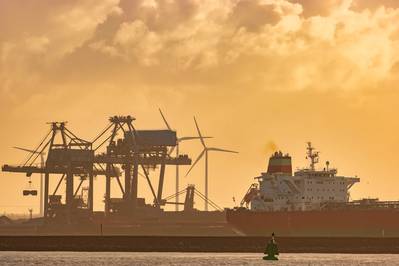EU to Add Shipping to Its Carbon Trading Market
Shipping will be included in Europe’s emissions trading system (ETS) and costs for polluters are set to rise under Brussels’ plans to meet the European Union’s climate targets, the European Commission said on Wednesday.
The EU ETS, which forces emitters to pay for each tonne of carbon dioxide they generate, is the keystone of an EU drive to cut net greenhouse gas emissions by 55% from 1990 levels by 2030.
Manufacturers, power firms and airlines operating flights inside Europe are already covered by the scheme but, under plans unveiled by the Commission on Wednesday, shipping would be phased into the ETS over a three-year period.
Emissions from sea voyages within the EU, plus 50% of ships’ emissions from international voyages starting or ending in the EU, would fall under the existing ETS, plus emissions that occur when ships are at berth in EU ports.
Emissions from road transport and from heating systems in buildings would need to comply with a separate ETS from 2026.
To ward off concerns that new levies could drive up costs for households, the Commission proposed that 25% of revenues generated from permit sales in the new ETS would go into a fund to shield low-income households from the carbon costs.
Polluters pay more
The EU now gives many free carbon permits to industries to help them compete with overseas firms that do not pay carbon costs.
Under the new proposals, likely to be opposed by many industries, this would be phased out for sectors covered by the EU’s planned carbon border tax on CO2 emissions embedded in imported goods such as steel and cement from 2026.
The EU will shrink the number of permits it gives to other industries from 2026.
Companies that have received free permits would be expected to pay for a steadily increasing portion of their emissions by buying permits, which have this year soared to record highs of more than 58 euros/tonne and now trade around 54.30 euros/tonne.
Airlines’ free CO2 permits would be phased out by 2027. Airlines currently receive most permits for free. Losing them will hike costs for carriers, which may mean higher ticket prices. The total number of permits in circulation will also be cut by almost 120 million allowances after the regulation enters into force. The number of permits entering the EU carbon market each year will decrease at a faster rate of 4.2%, compared with 2.2% today, following the one-off supply cut.
The proposal would strengthen the ETS “market stability reserve”, a mechanism designed to avoid a build-up of excess permits that could depress EU carbon prices.
When the ETS contains more than 1.096 billion spare permits, the reserve would absorb 24% per year until 2030. When there are 833 million to 1.096 billion permits in circulation, the reserve would absorb enough permits to bring that down to 833 million.
The measures are all likely to push up prices, with some analysts forecasting EU carbon prices will reach 90 euros a tonne by 2030.
All the reforms proposed by the Commission will have to be negotiated among member states and by the European Parliament, a process that could take roughly two years.
(Reporting by Susanna Twidale; Editing by Barbara Lewis and Edmund Blair)
















